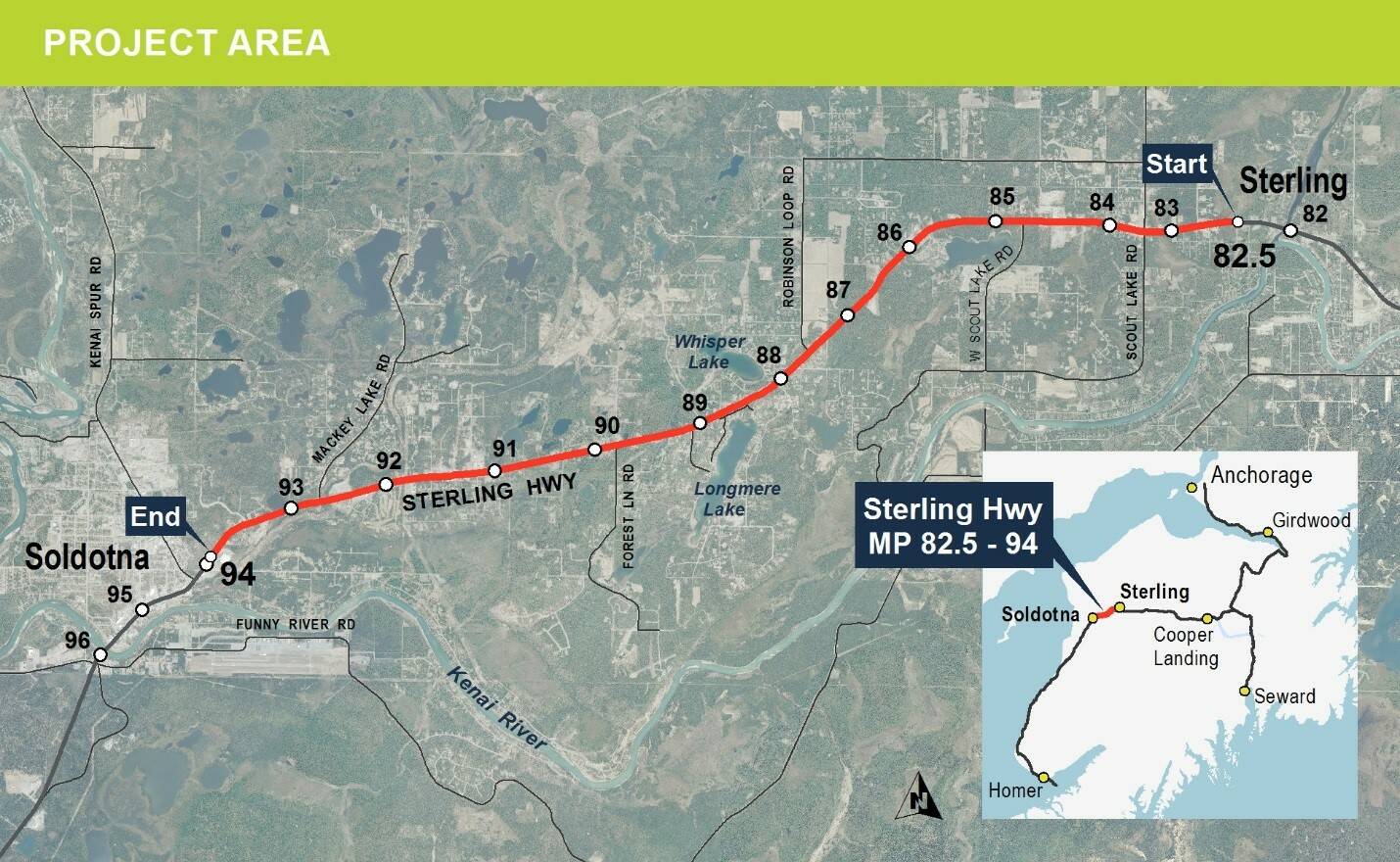A project to improve safety on the Sterling Highway will not have significant impact on the “human environment,” according to a project assessment released by the Department of Transportation and Public Facilities in December.
The DOT&PF conducted its environmental assessment of the safety corridor improvement project and determined that while there would be minor environmental impact, there would not be a significant amount.
The Sterling Safety Corridor Improvements project, which is projected to cost approximately $76.4 million, is eligible for federal funding contingent on data gathered in the environmental assessment, the project fact sheet states.
The environmental categories without project-imposed consequences included air quality, coastal barriers, coastal zone, cultural resources, farmland, fish habitat, floodplains, joint development, threatened and endangered species, water bodies and wild and scenic rivers, according to the assessment.
The assessment found that potential impacts from construction include energy use, noise levels, traffic delays, potential hazardous material exposure and wildlife avoidance of the project area, as well as environmental changes in wetland health, migratory bird habitat, and the potential spread of invasive species.
The impact assessment stated public comments “were generally in support of the proposed improvements, though not all attendees agreed.” The report noted that local highway users “continued to acknowledge the increasing levels of congestion and delay, as well as the number of crashes” generally expressing “a strong desire for improvements.”
Some business owners along the 11.5-mile stretch of the highway said they were concerned the project, specifically that the construction of the depressed median, would restrict access to the opposite side of the roadway, according to previous Clarion reporting.
The DOT&PF report found that there would be no significant environmental impact due to the highway project. The department can now start to finalize the project’s design and request federal funding, the fact sheet says.
The stretch highway to be improved reaches from Fred Meyer in Soldotna to the bridge over Moose River in Sterling — or Mile 82.5 to Mile 94 on the Sterling Highway. The project aims to create four lanes with a depressed median, a separated bike and pedestrian pathway north of the highway, turn lanes, and intersection realignments, among other safety changes.
In 2009 the 11.5-mile project area was designated a Traffic Safety Corridor, which is defined as a stretch of highway with higher-than-average vehicle accident rates.
There is no set timeline for the project currently, however, the fact sheet states construction can begin as soon as 2026 if funding is made available in a timely manner. The project is anticipated to take up to three seasons.
Reach reporter Camille Botello at camile.botello@peninsulaclarion.com.

